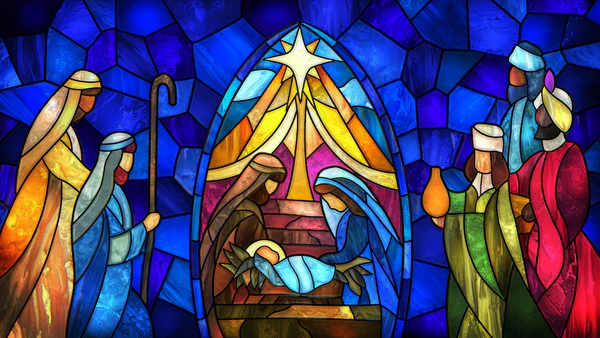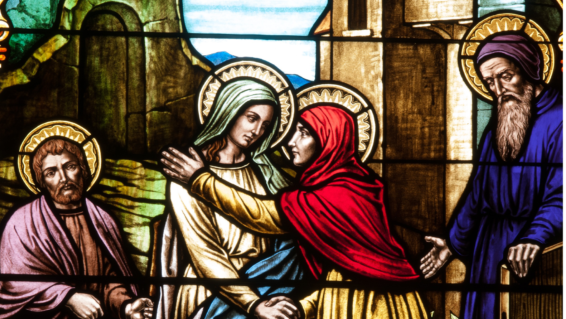“Eschatology” is a churchy word people often define as the study of the “end times.” It comes from the Greek eschatos, which usually translates “last.”
When people talk about eschatology they usually refer to the book of Revelation, though other books of the Bible have eschatology in mind, such as sections of Isaiah, Ezekiel, Daniel, Amos, Zechariah, 1 Corinthians, 1 and 2 Thessalonians and 2 Peter. This article will focus on Revelation since it is the primary place to which people turn.
Before we continue, here is a brief note on the human condition: We want control, and understanding is a form of control. Therefore, we seek understanding of what is to come (whether we should or not) because we think that if we can understand it, we can control it or at least prepare our reactions to it. When it comes to eschatology in the Bible, or biblical apocalyptic literature in general, understanding may not necessarily come quickly because this literature is dense, meditative and full of imagery (usually referring back to another image or author).
In the series, “The Great British Baking Show,” the judges often emphasize the distinction between style and substance. Often, contestants (amateur bakers) are skilled with styling their bakes, but the foods may lack a bit of quality regarding taste, texture, etc. Both attributes — style and substance — are important, but style catches the eye first.
For the sake of our discussion on eschatology, these terms — style and substance — will be helpful. In Part 1, we will examine several categories regarding the interpretation of eschatology in Revelation. This is where the style lies; it is what people want to know or debate or question because it is “many and varied.” And let’s be honest — it is confusing. Part 2 will dig into more of the substance of eschatology in general and the practical questions, “So what? Why does it matter anyway?”
Interpreting Revelation
In constructing these categories of interpretation I have compiled information from a few sources including author and professor G.K. Beale, Dennis E. Johnson (notes in The ESV Study Bible) and The Bible Project (which heavily references Michael J. Gorman). There are many different understandings of the events recorded in Revelation.
- Historicism — Believes the order of visions (and their contents) in Revelation 4-20 coincides with successive historical events in chronological order. Proponents of this view see these as having been fulfilled across Church history, leading up to the contemporary time of the interpreter. For example, historicists across time may identify parts of Revelation with the following: the invasion of the Roman Empire by the Goths, the reign of Charlemagne, the corruption of the medieval Church, the Reformation and the rule of Napoleon. The return of Christ is believed to be very soon.
- Futurism (or Predictive Futurist) — Sees the text as a code — one the original author and audience could not fully understand because the real meaning can only be unlocked once the predicted events take place. The order of the visions will follow the order of particular historical events, but the content of chapters 4-22 are still future to modern readers. Often, futurists particularly look to the following: a seven-year period of tribulation (outlined by chapters 6-19), a millennium of Christ’s reign on Earth (20:1-6), and the resurrection and inauguration of the new Heaven and Earth (20:7-22:5).
- Preterism — Features a couple of varieties, but broadly views the text as a code to be deciphered. In general, preterists understand that the fulfillment of Revelation’s visions occurred in the past. Some preterists hold that this fulfillment culminated in the fall of Jerusalem in A.D. 70, while others say the fall of the Roman Empire in the fifth century is the focus. However, there are “partial preterists” within this school of interpretation who maintain that a few events of the text are still to come, such as the return of Jesus or the resurrection of the Church.
- Idealist (or Poetic/Theopoetic) — Understands the imagery of Revelation as mythical and poetic symbolism expressing ultimate truths about God, His people, evil and history. The primary focus is the conflict with Christ and His Church against Satan and his allies. This reading does not seek the contents of the visions in any particular time in history, but the symbols and visions do find significance in the Church’s labor of enduring faith. Basically, the situations or “players in the drama” generally are always happening.
- Theopolitical — Grounds itself in the politics of the first century. The text originated due to the suffering and persecution of Christians in the Roman Empire; therefore, its purpose is to show the Kingdom of God as the antithesis to the kingdoms of the world. It is a form of political protest against the prevailing powers of the day, and its call is one of endurance and faithfulness for the Christian.
- Pastoral/Prophetic — Could likely fold into one of the above categories. The text is less a code and more a lens for the reader. It suggests the text is bound to the past but intends to speak to each generation of new readers through imagery, which then shapes the way readers see the world, as the text seeks to challenge and comfort the Church while urging her to faithfulness.
The thousand-year reign
In addition to the diversity of methods for reading a text like Revelation, there are three broad subcategories of disagreement in the words “a thousand years” in 20:1-6.
- Premillennialism — Often associated with Futurism, Premillennialism holds that Christ will return bodily before (hence “pre”) the thousand years referred to in verses 1-6, to defeat the evil forces of the beast and false prophet at Armageddon. Upon Christ’s victory the devil will be bound for a thousand years (usually interpreted literally), while the people of God reign with Christ on an Earth free of the devil’s deceit but not yet free of the consequences of sin and sorrow. After a thousand years, one final rebellion occurs in which the “dragon” is ultimately destroyed and the wicked are judged, resulting in the “second death” via the lake of fire. God then replaces the old, cursed Earth with the new Heaven and new Earth. Within premillennialism are three subcategories of thought regarding a period of “great tribulation” on Earth and Christ’s “taking up” of believers (often referred to as the rapture). Those who hold this interpretation often emphasize Paul’s writing in I Thessalonians 4:16-17 and combine it with the texts of Revelation.
- Pre-tribulational — Before Christ begins His reign of a thousand years, He secretly takes up believers from the Earth so they are absent during a literal seven-year period of great tribulation, whose events are found within the visions of Revelation 4-19.
- Mid-tribulational — Halfway through the period of tribulation (three-and-a-half years into the seven-year period), believers are taken up before a greater intensity of God’s wrath unfolds in the second half of the tribulation period.
- Post-tribulational — Both unbelievers and believers are present on Earth during the great period of tribulation, at the end of which believers are “caught up” with Christ. Nearly simultaneously, He returns to Earth to begin His reign of a thousand years, and brings believers with Him.
- Postmillennialism — Christ will return after (hence “post”) a thousand years. Some post-millennialists see the thousand years as an age of the future, wherein the Kingdom of God has spread with such breadth and depth that the world is transformed and Christ then returns. Other post-millennialists believe the thousand years represents an epoch that began when Christ ascended. He now rules through His Spirit and the work of the Church, which will gradually spread throughout the Earth until the world is conformed to God’s goodness and righteousness. At the end of the millennium, God relents His bonds of Satan and his allies, such that a last assault on the people of God occurs. Christ then returns to finally destroy these enemies and ushers in the new Heaven and Earth.
- Amillennialism — Understands that there will not (hence “a”) be a thousand years in the sense that pre- and post-millennialists hold. The thousand years is only a symbolic representation of a long period of time, not literal. Through the work of Christ’s death, resurrection and ascension, Satan was bound. Nevertheless, the Church still faces suffering and persecution. The visions of Revelation promise that the defeated enemy cannot thwart God’s plan of victory to ultimately redeem His people and His creation. Christ will return to finally destroy His enemies and inaugurate the new Heaven and Earth.
Thousands of pages fill books on these subjects. My descriptions are short summaries and could not exhaust every nuance of understanding and debate. The style of the subject can turn our heads and perk up our ears, but there is an underlying significance to the subject, and we must go there. The substance is next.






